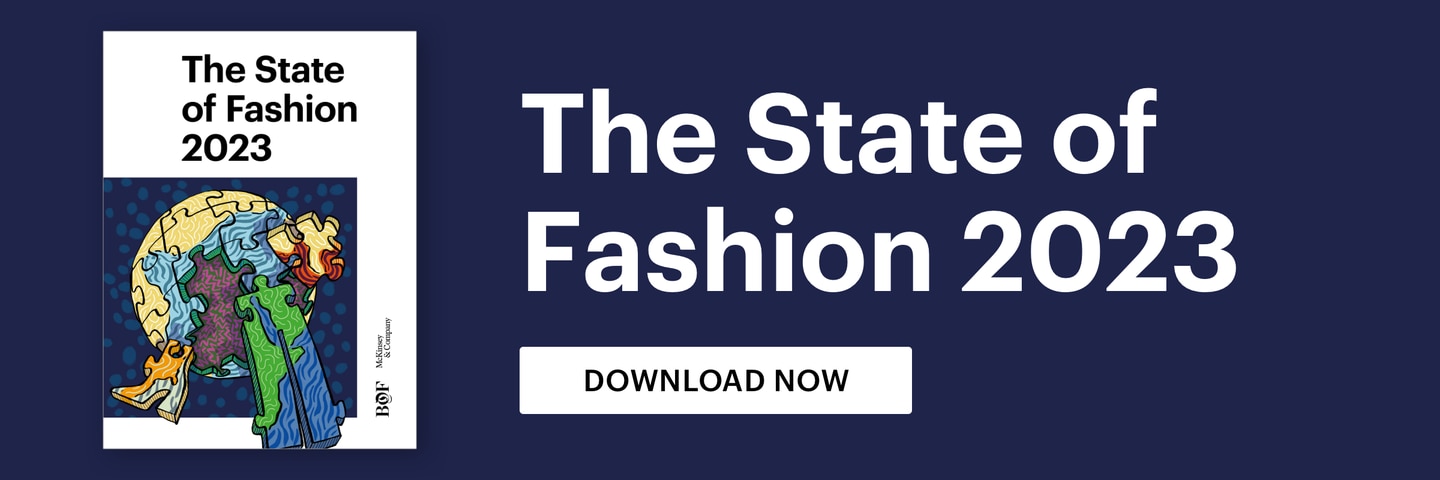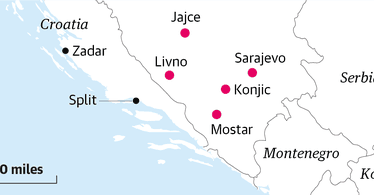
When Timothée Chalamet wore a bright red, halter-top, slimly cut jumpsuit at the 2022 Venice Film Festival, the 26-year-old movie star — and his outfit designed by Haider Ackermann — turned heads. As gender-subverting couture goes, this was yet another memorable moment. Chalamet has essentially become the poster child for young generations that are using fashion to assert their freedom of expression, often by disregarding conventional gendered stereotypes.
It’s a cultural shift for which Gen-Z can take much of the credit. Born between the mid-1990s and the 2010s, this generation has been vocal — most often on social media — about their opposition to being pigeonholed into a binary world of male and female. “Our generation has dismantled the idea that gender is a male and female binary,” said 22-year-old Nate Jones, head of talent at Juv Consulting, which advises companies on connecting with Gen-Z. “I think clothing is just one area that’s inevitably going to be touched because it’s [essential to our every day] and [shopping] is still mostly a gendered experience at this point.”
Even veterans of fluid fashion design are seeing Gen-Z’s influence. “I think in the last few years, things have changed a lot,” said designer Alejandro Gómez Palomo, who founded gender-neutral label Palomo Spain in 2015. “You can see now a skater with nails painted in pink, wearing a crop top and a pearl necklace, and he’s [a] completely straight boy. … [A few years ago] it would be, like, ‘only for the gays, only for that community that I’m part of.’”
Across the fashion industry, it signals a significant pivot. Gen-Z now holds great sway over key parts of the fashion industry. Not only is Gen-Z the largest generation ever — at 25 percent of the global population — but it also has spending clout: In the US alone, Gen-Z consumers have an estimated purchasing power of $360 billion, according to BoF Insights, the research and analysis arm of BoF.
But as brands and retailers are discovering, changing their gender-specific shopping experiences and building a fluid-fashion offering that resonates with this generation is far from straightforward. In particular, Gen-Z’s relationship with gender-neutrality in fashion can be nebulous at best. For example, the generation is not necessarily seeking out gender-neutral garments — Gen-Z prioritises other factors such as affordability when purchasing clothes. However, Gen-Z cares about inclusivity and having the freedom to shop across fashion’s gendered categories, showing more willingness to wear garments designed for another gender. As such, Gen-Z may not be seeking out gender-neutral fashion explicitly, but choosing to interact with brands in a less restrictive way than generations past.
As Juv’s Jones put it: “When I’m making any buying decision, first and foremost, I think about how it looks, then I think about the quality, and I think about the price of what I’m buying.”
Igniter of Trends
Just a generation or two ago, the world was different. And so were attitudes about gender fluidity. But as Gen-Z began growing up, change was afoot. By 2016, a study from marketing communications agency Wunderman Thompson found that 56 percent of Gen-Z consumers shopped for clothes across genders.
In the same year, Jaden Smith, then 17 years old and now a Gen-Z style icon, starred in a global campaign for Louis Vuitton wearing a skirt from the label’s women’s collection. From then on, independent brands began capturing more attention for their gender-fluid messages, including Hood by Air — which was ahead of its time when Raul Lopez and Shayne Oliver launched it in 2007 — along with Palomo Spain, Ludovic de Saint Sernin and Telfar. As a broader shift towards casualisation took off, streetwear got in the game too. Wardrobe essentials began to include streetwear items that were not assigned to a gender, including roomy hoodies and mini cross-body shoulder bags.
Gen-Z has inspired and been inspired by a number of role models, ranging from beauty influencer Bretman Rock, who shot to YouTube fame as a teenager in 2015, and gender non-conforming designer Harris Reed, who was recently appointed Nina Ricci’s creative director. For the role models, wearing gender-neutral clothing, or dressing in a gender-fluid way, is not as radical as perhaps it was for their parents. It’s just part of how they see the world and how they want to live in it.
Gen-Z is translating this into fashion in unique ways. Increasingly, they see themselves as co-creators, playing an active part in the ideation of new styles, rather than waiting for brands to show them what the next big trends are. Steve Dool, brand director of social e-commerce company Depop told BoF Insights: “This generation is more likely to gain inspiration from their peers and who they see online, versus the top-down fashion system that has been the default trend driver for previous generations.”
Now, trends often start on social media platforms like Instagram, TikTok and BeReal. “Coastal grandmother,” a look inspired by actor Diane Keaton’s menswear-infused style — harking back to her wardrobe in films like “Annie Hall” (1977) and “Something’s Gotta Give” (2003) — became a cultural phenomenon in 2022. It was not started by a magazine or a brand campaign, but by TikToker Lex Nicoleta.
Several hashtags on TikTok now organise user-generated videos featuring gender fluidity or gender neutrality, such as #femboy, which has garnered more than 3 billion global views as of the end of October 2022. Meanwhile, #genderneutralfashion has had over 316 million views, #genderneutral over 223 million and #mascgirl over 66 million.
Brands Respond
For much of the past decade, brands have been experimenting with understanding what does and doesn’t work in fluid fashion shopping experiences across different price points. At Palomo Spain, for example, Gómez has been on a multi-year journey as one of the first high-end genderless labels to get noticed by the industry and get the label onto shop floors. Department stores initially struggled to figure out whether to display Palomo Spain’s clothing in the women’s section, men’s section or both. In the end, men’s sections prevailed for Palomo Spain. The stores then also sought changes to accommodate female customers. “It was really hard for us as well to change the patterns and the shapes and everything because [the stores] wanted [garments] for girls and in a smaller size,” he recalled, adding that he did not want the label to be pigeonholed. “I make clothes that everyone can wear. … I like playing with masculine/feminine all the time and that tension, of course, attracts womenswear clients and menswear clients.”
With wholesale channels, the brand has had to find a gender-specific middle ground, catering to male and female customers differently. With more men than women shopping on its website, Gómez started organising pop-ups and opened the Palomo Spain studio in Madrid for women, having found that the vast majority of the brand’s female customers prefer trying on garments.
Another fashion brand that has confronted the practical issues of fluid fashion is Eytys. Founded by Jonathan Hirschfeld and Max Schiller in 2013, the Stockholm-based brand started by selling thick-soled unisex sneakers before branching out into clothing, online and in three stores — two in Stockholm and one in London. “Unisex has always been a given for Eytys’ products. It felt natural for us. We see it as a service, the customer chooses,” Schiller said. “As our collections grew it made sense to continue with a unisex philosophy for all products to not limit our customers.”
The company now merchandises collections in its physical stores based on looks, not on gender. On the Eytys website, its products, which are often available in extended size runs and come with detailed size charts for all body types, are photographed both on male and female models who reflect the racial diversity and various identities of its customers.
Schiller conceded that the company’s business model may have been easier to execute with separate menswear and womenswear categories because of the challenges posed in production, merchandising and marketing. But, “we can now see that the efforts and the costs associated with the complexity are starting to pay off,” he said. For example, he noted that the brand’s Benz jeans, Eytys’ take on the 1990s baggy jean, is bought equally by customers who identify as male and female, while boots and dress shoes that were primarily bought by female customers are attracting male customers too. Its Gaia boots, which come with high heels in EU sizes 43 to 45, are “always out of stock,” he added.
This fluid-fashion trajectory is not lost on retailers either. UK department store Selfridges, for example, has been buying extended-size runs from brands if they are available, which accommodate male, female and non-binary body shapes. The retailer also places both male and female mannequins in each department. “Our approach is to make the shopping experience as natural as possible,” said Sebastian Manes, merchandising and buying director at Selfridges.
Mixing and Matching
The industry is also approaching marketing differently, often putting greater emphasis on inclusivity generally than on gender neutrality. Craig Brommers, chief marketing officer of popular Gen-Z brand American Eagle Outfitters, explained on a recent webinar that the brand intentionally keeps briefs for photo shoots “loose” so that creatives have the leeway to mix genders and styles as they see fit.
Brommers added that AEO has decided not to explicitly market itself as a gender-neutral brand. “Right or wrong, we are not out there pounding our chests about this because we feel that this is an individual choice, and this is naturally happening,” he said. “I think there are other brands that are talking this up more … [but] what we are saying: you be you and we’re happy for you to be you.”
In many respects, Gen-Z sees gender-fluid fashion as being about more than just products. “We’re thinking about the brand or company we’re buying from, the team it’s coming from, the faces behind and in front of the camera, and all that goes into getting that product out the door,” said Juv’s Jones. “Our buying power is only growing, and we’re only ageing into the market. And so I think it’s important to meet [us] where we are.”
This article first appeared in The State of Fashion 2023, an in-depth report on the global fashion industry, co-published by BoF and McKinsey & Company.




